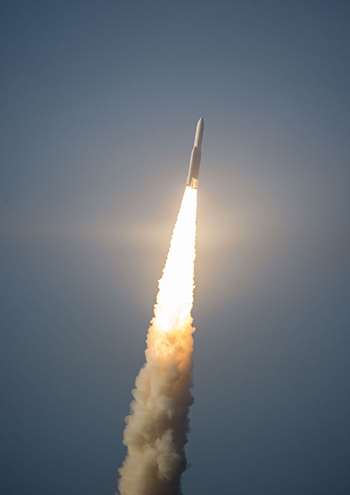NBN is preparing to make its long-term satellite service commercially available in April, with the first customers due to start trialling the service within weeks.
The company today provided the “first outing” for broadband services over the Sky Muster satellite that it launched into orbit in October last year.
It is one of two satellites that will eventually make up the NBN long-term satellite service. The other satellite will be launched later this year.
“It’s about four months since the [first] Sky Muster satellite was launched,” NBN’s executive general manager for new developments, wireless and satellite Gavin Williams told Information Age.
“Since then we’ve been progressing with testing.”
Loral Space Systems – which launched the satellite into orbit – performed testing of the satellite itself before handing over to Optus, which has responsibility for tracking, telemetry and control.
The long-term satellite service will use 101 “spot beams” – effectively coverage zones – to service users in Australia and surrounding island territories.
In commissioning and testing the performance of each of those beams, an “end user service” has been installed in each, Williams said.
However, NBN will get its first idea of the technical readiness of the service when it begins a proper field trial in “regional Victoria” using 200 customers in several spot beams.
The field trial involves customers from three retail service providers – SkyMesh, Harbour ISP and Activ8me – who were selected in an expression of interest (EOI) process run by NBN.
All three of those service providers have progressively released satellite plans for the new service over the past month.
While they have all started taking orders, they will not be able to provision those orders until approximately April.
Services will be sold at a base speed of 12/1 Mbps down/up, with a 25/5 Mbps service also made available.
As per guidance last year, the maximum data allowance that any one user can buy is 150GB per month, split into peak and off-peak amounts.
There is a broad price range being offered, depending on how keen internet users are to spend the scant hours between 1am and 7am each day online.
For example, SkyMesh offers a 5GB peak / 145GB off-peak service at 25/5 Mbps speeds for under $60 a month.
Allocate 100GB instead to peak quota and 50GB to off-peak on rival Activ8me, and the cost balloons to $230 a month.
NBN is presently building a team of some 650 installers Australia-wide to help get customers onto the new satellite service from April.
Williams said that some of the 650 would be part-time but he did not have a breakdown of those numbers.
“The key requirement at the point of launch is to have field staff able to do the installations,” he said.
“That will be the key resource constraint.
“We’re gearing that up to be able to do a job that’s up to three times the volume that’s been seen in the satellite industry before.”
While the new satellite service theoretically covered metropolitan areas – it’s “first outing” today was to select users in Melbourne’s metro area – NBN won’t be making the satellite service available to city internet users hungry for fresh bandwidth.
The company runs a user-pays system called Technology Choice that allows, for example, users slated to receive a fixed wireless connection to price a user-pays upgrade to a fibre-to-the-node or fibre-to-the-premises connection.
However, Williams said it was not intended that the Technology Choice program be used by metro internet users that were sick of waiting for an NBN connection.
“The satellite’s being put up there to transform communication services in the bush,” he said.
“Unfortunately if you’ve been promised another NBN access technology, you’ll need to hold out for it [to arrive].”










